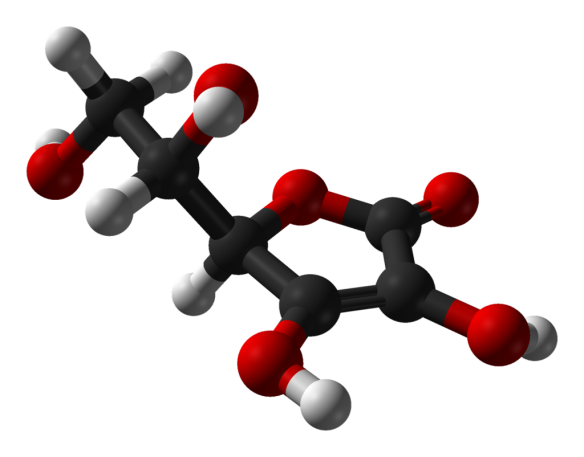Important for this time of year – Vitamin C
What does it look like?

What is it?
The idea of vitamins dates from the early 1900s to explain substances that were shown to be vital to the human diet. The way these were identified was by running studies where some patients were deprived of the substance in question and monitors to see what went wrong with them!
Vitamin C was the third of these vital substances to be identified.
Vitamin C is also known as L-ascorbic acid and is a relatively simple compound made up of 6 carbon atoms, 6 oxygen atoms and 7 hydrogen atoms. We humans are among only a handful of animals that need to get their vitamin C from their food. Cats and dogs, for instance, can produce vitamin C in their livers and so don't need to eat it.
But, despite being a relatively simple compound, even after a hundred years of knowing that we need to eat vitamin C, we still really don't know why! It is known that we need it to produce collagen (which is a protein that binds and supports other body tissue – this is why it is injected into lips and faces for plastic surgery). The need for vitamin C to produce collagen explains the early symptoms of scurvy (severe deprivation of vitamin C), swelling of the limbs and softening of the gums. Scurvy many people think of as an old disease, only affecting sailors in the 1700s who spent long voyages only eating worm-ridden bread. But sadly this is all too common among the elderly today who lose interest in cooking for themselves.
We need 0.01 g of vitamin C a day to keep scurvy at bay (a quarter of an orange). But will eating lots of fruit help me with my cold? Probably not, unfortunately, as after we've had 0.15 g of vitamin C in a day (two and a quarter oranges) our bodies can't process any more; any excess gets filtered out by our kidneys.
Where did the structure come from?
The crystal structure of Vitamin C was first worked out by Hvoslef in 1968.






